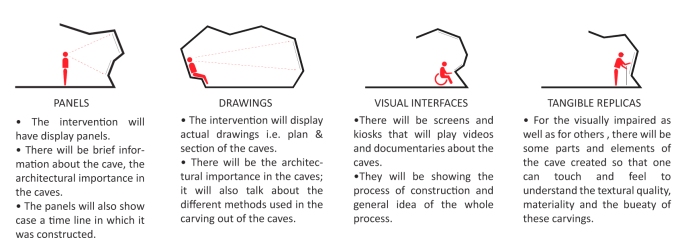Heritage for All: differently-abled and heritage accessibility
The concept of “Heritage for All” started forming in my mind after the Hands-on Site Workshop with disabled (but I refer to them as differently-abled) at the UNESCO World Heritage Site of Sanchi Stupa in Madhya Pradesh (India).
Sanchi is one of the most important religious and archaeological sites in the Buddhist landscape and attracts thousands of visitors across the globe. Sanchi, called Bota-Sriparvata in ancient times, characterises for having remarkable specimens of Buddhist art and architecture right from the early Mauryan period (c. III century b.C. – XII century A.D.), and it is famous in the world for the monolithic Ashokan pillars, stupas, temples, monasteries, and sculptural wealth.
As reported by BBC (The Travel Show), 15% of the world population is differently abled, and access to heritage sites can be very difficult for them. During the workshop at Sanchi a very important question arose in my mind: Who is really disabled? Is it a differently-abled human or is it the technology that “abled” people are not actually able to develop for him/her? In a world where technology is taking over all major domains of existence, heritage should not be left out.
For example, why should a pregnant woman not be able to visit a heritage site only because it has a hilly terrain? Or why should a visually impaired person not be able to enjoy the magnificence of a monument? As an architect, I firmly believe in the importance of experiencing a site and taking that experience back with you. On this understanding, together with my two colleagues Ar. Jay Kapadia (M.Arch Urban Design) and Ar. Siddhi Desai Kapadia (M.Arch Urban Research), I designed a proposal to make the World Heritage Site of Ellora Caves universally accessible. The proposal took part in a competition and was awarded second prize by the Archaeological Survey of India and UNESCO.
The proposal has several interesting ideas. Since we believe that engagement with the site is the primary source of knowledge, we proposed to create tangible replicas of certain sculptures, so that they could be touched and understood by the visually impaired (which even include people who just look at things without really understanding them).
We also designed interactive info-games for kids and adults. Playing a game which imparts information has a great impact on the learning process, as one interacts with the site in an entirely new way. So we created tablet apps, interactive maps and audio visuals to be placed at various nodes, where the geography made access difficult.
Thus in my outlook as a heritage manager it will be my prime duty to engage the audience and make sites as interactive as possible for all visitors so as to enrich everybody’s experience.
Images and photos by Siddhant Shah.
 Siddhant Shah is an Architect with Majors in Indian Aesthetics. He has worked with the State Archaeological Department (Mumbai) and has undertaken Heritage Volunteer training for UNESCO and ICOMOS. He is currently based in Greece, completing an MA in Heritage Management, and focuses on Management, Marketing and Disabled-Friendliness of Archaeological/Heritage Sites.
Siddhant Shah is an Architect with Majors in Indian Aesthetics. He has worked with the State Archaeological Department (Mumbai) and has undertaken Heritage Volunteer training for UNESCO and ICOMOS. He is currently based in Greece, completing an MA in Heritage Management, and focuses on Management, Marketing and Disabled-Friendliness of Archaeological/Heritage Sites.




Madhan Balachandramohan,
Nov 19, 2014 at 12:26 pmGood article (Images and Photos) shared by Mr.Siddhant Shah, I would like to appreciate your work particularly on the Heritage information, specimens of Buddhist art and architecture, the layers of interaction stuff and examples are very essential for these subjected matter. All the very best for your future projects. GBU – Madhan Balachandramohan,
pooja
Nov 19, 2014 at 12:27 pmIt is amazing that the writer has pointed out such an important aspect i.e. heritage experience for the differently abled. It is a point generally overlooked by many and it is indeed great that Siddhant has explained not just the value of heritage structures but also the fact that they need to be “accessible” to everyone!